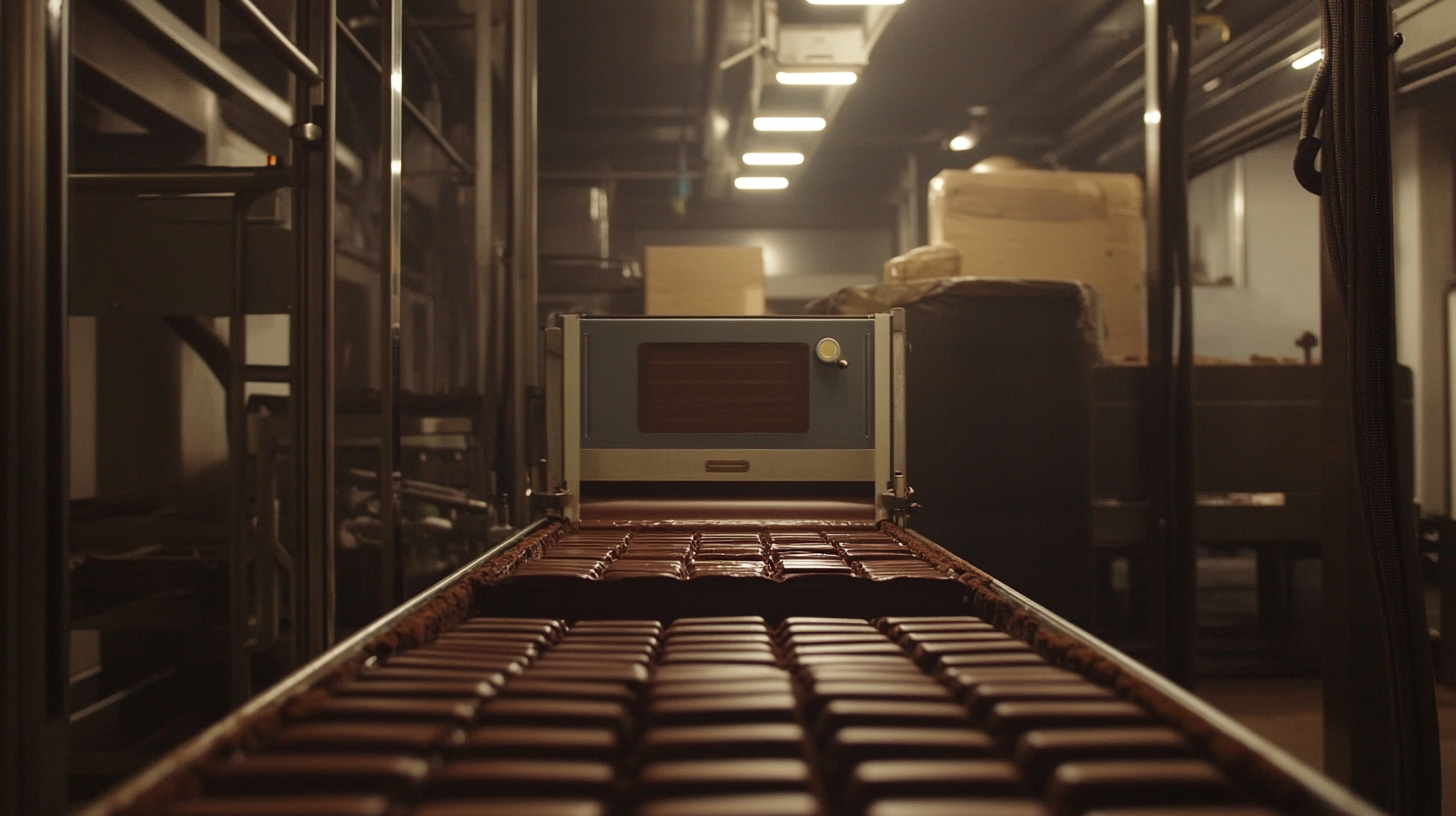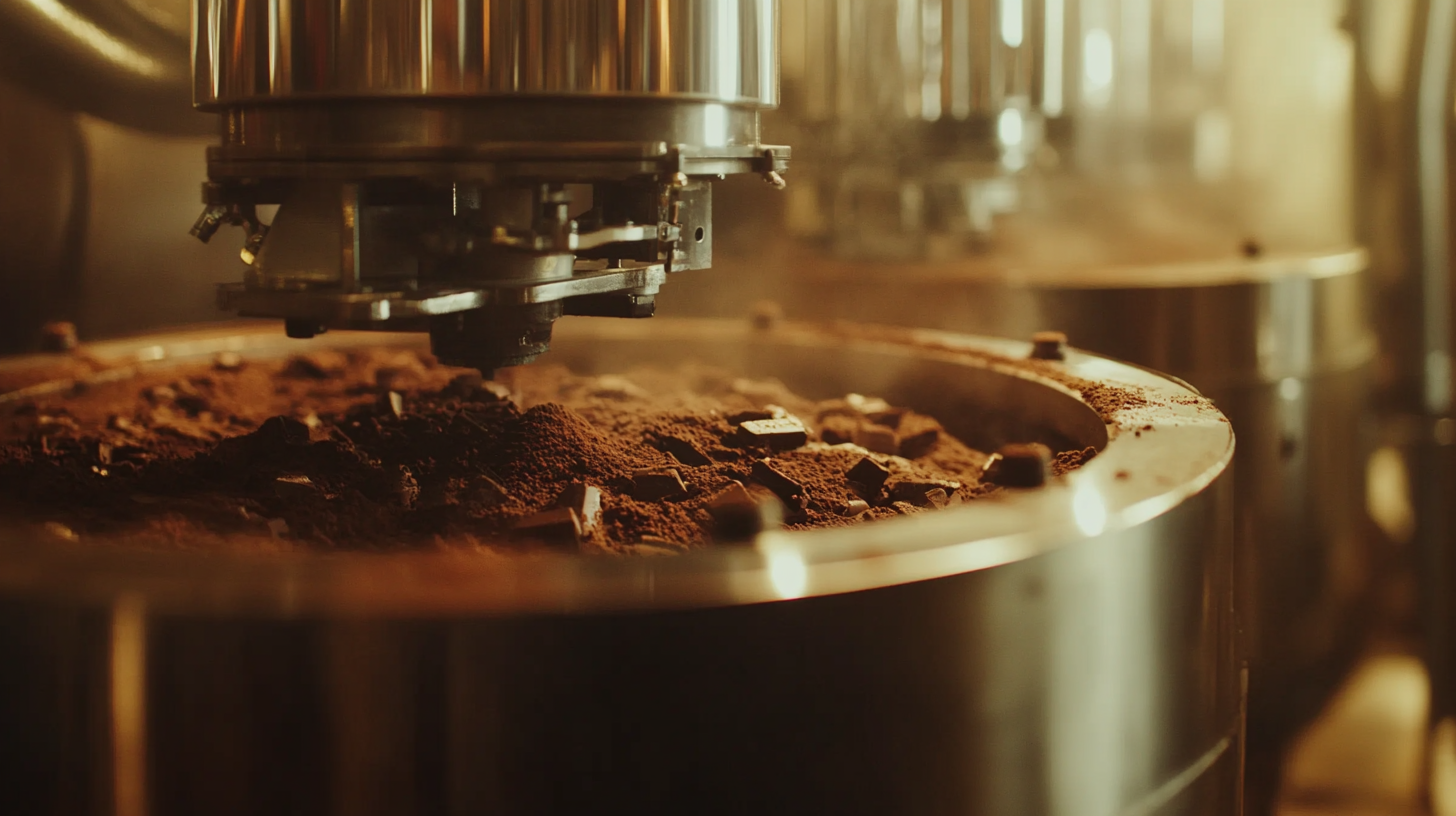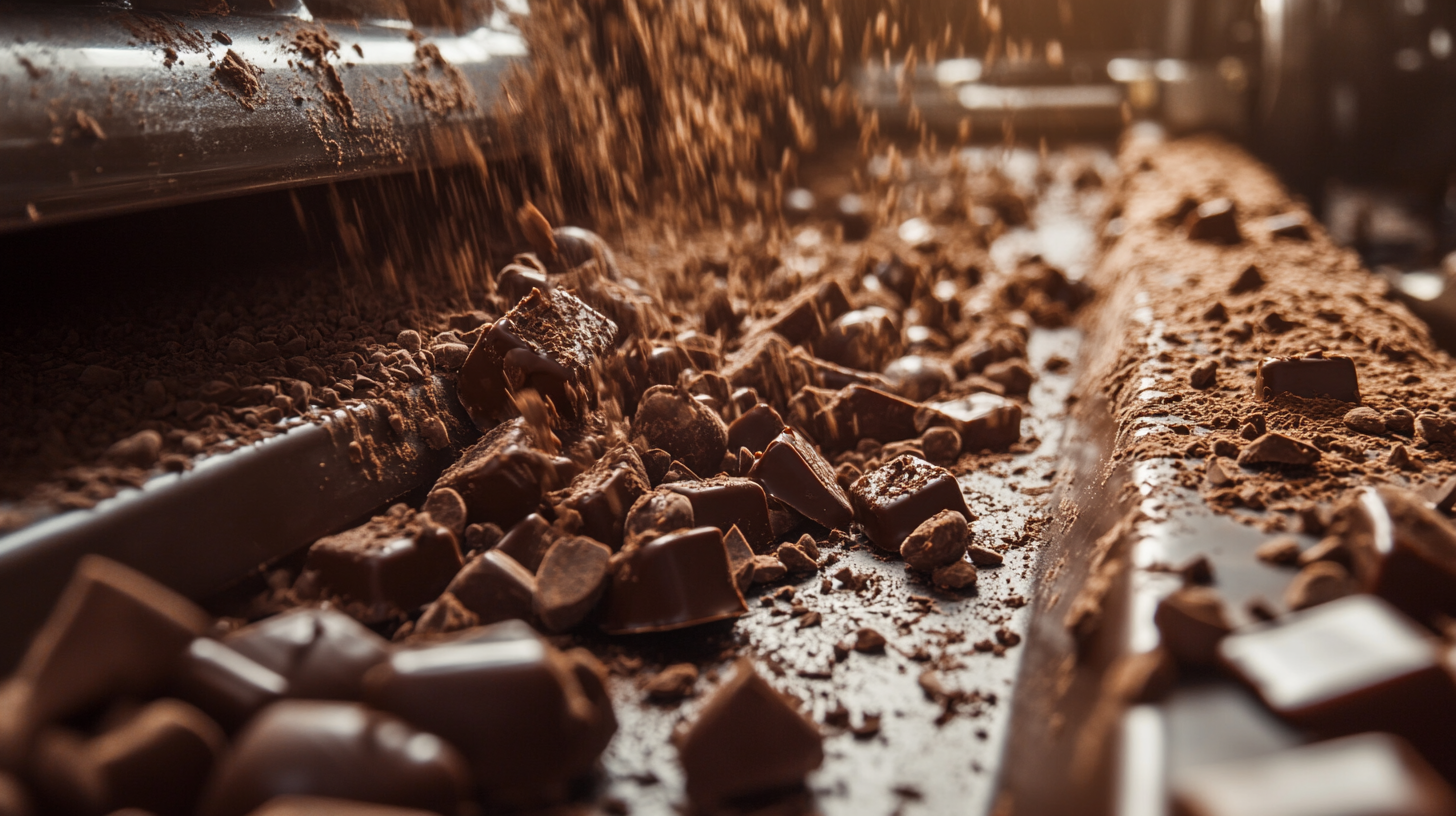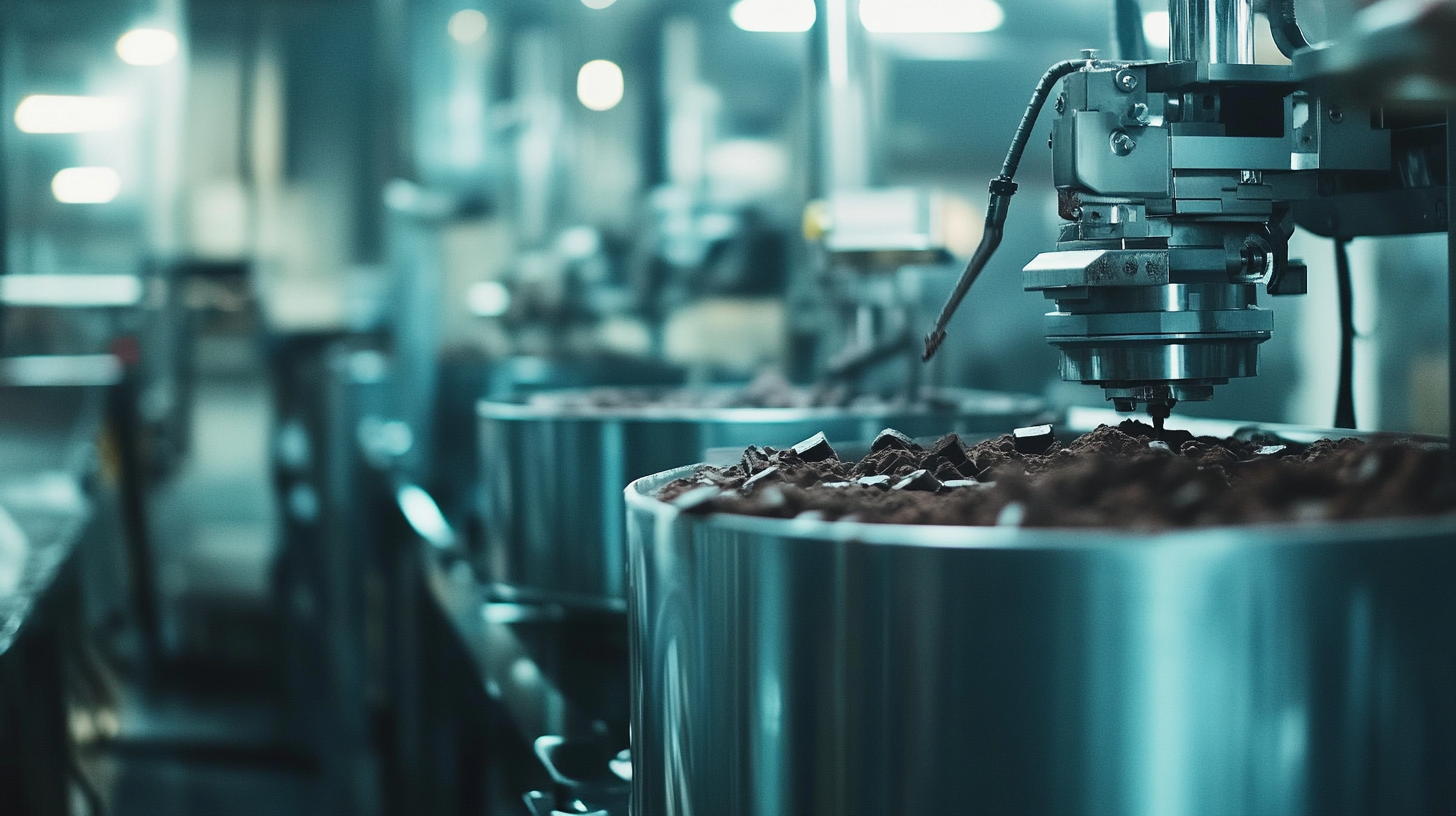The transformative phase in the chocolate industry never ceases; chocolates have been emerging in various forms of production until modulation mechanisms, machines in particular that promise a great deal concerning modernization, will transform much. Such machines will not only streamline production but will also be crucial in upgrading the quality of the final product. But it seems keeping pace with fast-advancing technology has several problems for machines and manufacturers.
It would thus require good understanding about the mechanisms of dealing with cacao machine functionalities that will relate with production outputs. Cacao machines must be well handled, from altered machine settings to proper maintenance, to overcome the challenges that limit productivity. In this blog, I discuss the major efficiency challenges posed within the chocolate-making machine and how modern cacao machines can ameliorate these challenges into opportunities for the coming generation to grow in the industry.

From the first moment of chocolate production, efficiency determines the quality of the end product versus the profitability of the entire process. Because of the ever-increasing demand for chocolate across the globe, the producers are under constant pressure to maintain efficient operations. Efficiency in chocolate production means cost-cutting in some areas, but it has greater and much broader implications concerning the quickness, uniformity, and sustainability of the entire production chain. One important area of gaining efficiency lies in the way cacao machinery is used. Such machines are used to eliminate inefficiencies in various stages of production-the grinding of cacao beans and tempering of chocolate. By investing in better technology, manufacturers lower their wastage, energy consumption, and increase their output. Improved machinery also benefits flavor and texture. When processing conditions are consistent, chocolate production aimed at meeting consumer expectations is high quality. The other dimension of efficiency is sustainability. As concerns for the environment arise, companies are beginning to realize that addressing efficiency in their production processes also means confronting their carbon footprints and preserving the remaining resources. Efficiency is an underhanded way to make some money while adding a certain amount of cash towards one's reputation as a responsible producer. The more the traded chocolate gives importance to sustainability, efficiency for a brand would work as a basis to survive through competition.

As the production of cacao has been significantly advanced in recent times with several introduced cacao machines, the challenges presented from their operations are usually neglected. About 30 percent of cacao processors, according to an FAO industry report, cite malfunctioning machines and lack of proper training as causes of inefficiencies; therefore, understanding and addressing common challenges in cacao machine operations becomes quite critical.
One such prominent challenge is the calibration of the machines. Misalignment at setup will cause varying texture of chocolate, hence affecting quality. The analysis done by the International Cocoa Organization indicates that poor calibration could, at times, hamper quality by approximately 25 percent. Subsequently, this very same situation now leads to poor customer satisfaction and generates wastages which in turn inflate costs and put an enormous dent in profit margins.
Most curiously, neglectful maintenance procedures are frequent, resulting in avoidable downtime. Maintenance is key to the efficient running of cacao machines. However, available information indicates that close to 40 percent of cocoa producers, ranging from small to medium-sized outfits, have no maintenance program in place. This lost opportunity results in sudden breakdowns, ultimately delaying production and resulting in financial losses. Identifying these challenges within cacao machine operations will help producers advance with some strategic improvement leading to increased overall production efficiency.

Production efficiency and process change in the cocoa processing industry has delayed progress, especially with traditional chocolate manufacturing. New innovations are coming up to solve the problems of inefficient cacao processing. According to a report from the International Cocoa Organization, it is revealed that the global chocolate market shall be as high as $161.56 billion by 2024, thus creating a strong demand for more efficient processes for production to meet consumer needs.
One of the areas where streamlining can occur is through advanced cacao machines that will help to improve production. Modern processing equipment such as continuous roasters, automated winnowers, etc., can make processing time and labor not as much as using traditional methods. According to a study published in the Journal of Food Engineering, automated system use could increase processing efficiency of as much as 25% and will assure more uniformity in the quality of the end chocolate product.
Also, using data related technologies such as IoT and AI could upgrade cacao processing. Real-time tracking of every stage in production enables manufacturers to make well-informed decision-making and forest-allocation valuable resource management. According to the Mordor Intelligence report, smart machines can cut operational costs to about 15%, thus highly improving profit margins in very competitive markets.
To sum up, the future of cacao processing is about inkind solutions that not only create efficiency but accomplishment in sustainability. Hereby, the technologies and modern machinery can be used to better quality while ensuring no waste against the growing demand in chocolate production.

Sustainability is yet another major factor under consideration in modern chocolate production, and technology plays a vital role here as well. Energy-efficient machines, for instance, are being used alongside waste-reduction practices. With the adoption of these technologies, chocolate producers are able to curb production challenges while responding to the soaring demand for sustainable and ethically sourced products.
In the case of integrating technology, precision machinery is another key to optimizing every stage of chocolate production; from grinding to conching. These machines come embedded with modern sensors and controls to measure temperature, moisture, and particle size to keep the consistency of the final product. In addition, data analyzing tools help manufacturers with insights into the efficiency of production by suggesting, for example, when bottlenecks arise and where improvements need to be made.
The older machines that people had installed for processing cacao have made the industry suffer from inefficiency. However, this misfortune has not been the same for many companies that have been updated with new advanced technology in some way or another. One good example would be the manufacturer that shifted from using manual processes for cacao grinding to automated cacao grinding systems. With the integration of these machines, a considerable reduction of time for production has been achieved, and statistically, the consistency of outputs is now against when doing them manually, all of which place the product quality.
Another encouraging example is the case of a small artisan chocolate maker who installed smart cacao processing equipment. This made it possible for real-time observations of production conditions with precise adjustments to improve flavor profiles. Such an innovation cost them a lot but ended up improving their products and minimizing waste for cheaper and better operations.
Another example is that of a large chocolate manufacturer, which designed machine maintenance with employee education programs in training session systems to minimize operational inefficiencies. More productivity was realized through increased knowledge of employees on machine capabilities and best practices to solve the problems earlier on. This proactive approach would keep production smoother and ultimately integrate quality and operational excellence in the usage of cacao machines. Case studies are a way of showing the importance of innovation and adaptation in overcoming challenges in the production landscape of cacao.
For more information, fill out our contact form